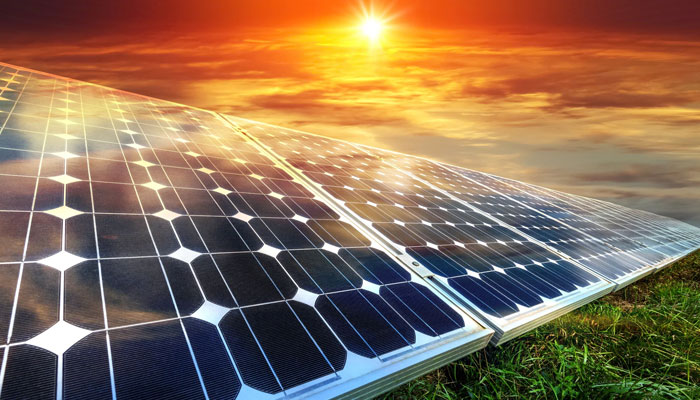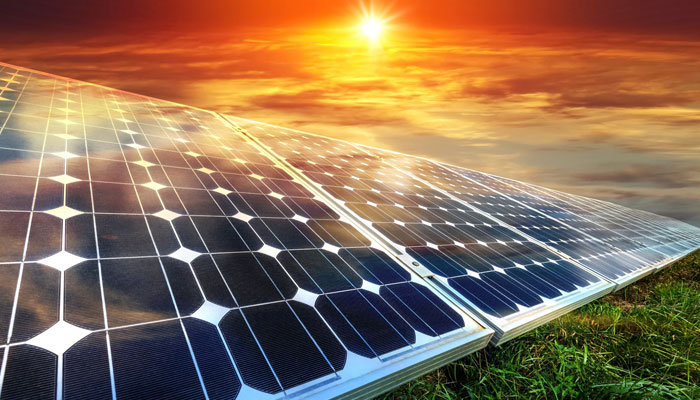
Have you ever wondered what life was like a few decades ago? Or how does the current life, lifestyle, activities and other daily activities compare with the previous decades? I am sure that even if there is no comparison, then the clear difference must have been felt. A very wide web of science and technology and innovation seems to be defeating other sciences today when we see changes in our daily life so fast, the speed with which modern technology dominates all aspects of life. done.
It is not easy to ignore it, it would not be wrong to say that because of modern technology, man is connected to the whole world. Our socio-economic status is also dependent on technologies. How modern technology is affecting our lives. You will understand this by reading about the following inventions.
Energy from the sun
The sun supplies our planet with abundant energy, with the amount of solar energy reaching 85,000 terawatts per year. In comparison, our Earth’s annual energy consumption is 16 terawatts, meaning that the Sun provides 5,000 times the amount of energy needed on Earth.
So it seems strange that by burning mineral oil we are polluting our earth while the vast amount of energy from the sun is being wasted, but the situation is changing rapidly now and such advanced technologies. are coming forward which can be used by Pakistan as well. Solar cells are typically made from silicon wafers.
These glass-like crystalline materials have achieved commercial efficiencies of 20 percent, but manufacturing solar panels from the same metal can be quite expensive, however, it is suitable for remote areas where it is possible to build a grid station to provide cheap electricity. Thin-film solar cells are made from amorphous nanocrystalline and other types of silicon and are produced by chemical vapor deposition.
The steam generated by this Concentrated Solar Power (CST) is at a temperature of 850 degrees Fahrenheit, which is used to drive turbines that generate electricity. They are controlled by computers. Experts expect that the use of CST technology will double worldwide after 16 months.
Solar panel
Less than half of the heat that the sun gives to the earth consists of infrared light, while the rest is in the form of visible light. When bright sunlight hits the surface of the ocean, the resulting radiant irradiance is a little more than one kilowatt per square meter of surface area. Solar panels need visible light from the sun to generate electricity. Although not all of the light from the sun can be used to produce energy, new devices are being developed to convert infrared rays (which are also available at night) into energy. Can be used.
This technology consists of arrays of millions of nanoscale light-sensitive antennas, which have been an important source of energy until now. Half of the total energy in sunlight is in the infrared region. Infrared light is reflected from the earth’s surface even after the sun has set. This energy can be captured in the form of heat even at night. Steve Novack, who works at the US Department of Energy’s Idaho National Laboratory, has estimated that with the help of this technology, the efficiency of the new generation of solar cells can be increased by 42 percent.
Biofuel Technology
Fuel cell powered cars have hit the market. In addition, several companies are working on the production of biodiesel from algae. A well-known method for ethanol production is fermentation of glucose with yeast, however. The yeast strain used in this method is not capable of converting another sugar, xylose, which is an important part of plant biomass.
Now, scientists working at the University of Illinois Lawrence Berkeley National Laboratory, the University of California and the energy company BP have discovered a new yeast strain capable of converting both glucose and xylose into ethanol, increasing the overall amount of ethanol. Will be.
Harvesting thermal energy from oceans
The water temperature is higher at the surface of the ocean, while it cools down in the depths. This temperature difference can be used to generate electricity. In this technology, warm seawater is pumped through heat exchangers. The heat is used to vaporize a liquid with a low boiling point, such as ammonia, and the vapor is used to drive gas turbines. and electricity is generated from it.
Ammonia gas is mixed with a condenser which is cooled with the help of cold water pumped from the deep sea and then the gas turns into a liquid. This cycle is repeated by pumping the liquid ammonia to the surface where a hot water-based heat exchanger converts it to vapor. There is a temperature difference of 60 degrees Celsius (86 degrees Fahrenheit) between the surface water and the water in the deep ocean, which is common in the oceans. An additional degree difference causes a 15 percent increase in energy output.
By using this technology, stable, continuous and reliable energy can be provided around the clock while wind or solar energy depends on changing seasons. Although details regarding the feasibility of this project have been revealed in various pilot plans, it is yet to be offered on a commercial scale. are Considering to start projects in this new field.
Battery-derived raw materials for electric cars
The biggest problem for electric cars is the materials needed to charge their batteries. The solution to this problem has been found to charge these batteries with pre-georged battery fluid. A discharged battery fluid will be pumped out into a bag, just like you fill an empty tank with petrol. This technology has also been developed, in which semi solid flow batteries have been used. These batteries are much better than current bulky and expensive flow batteries.
These new batteries are much lighter and cheaper and use a new fluid developed in 777384, which has 10 times more power than the old batteries. MIT research has named it Cambridge Crude, which is synonymous with crude oil. which is obtained from the petrol obtained from petrol powered cars. Now electric cars are not as slow as copper electric cars. The fastest electric sports cars can go from 60 miles per hour in 3 seconds.
Energy from hot rocks
In Cornwall, Britain, a project is being considered to obtain energy from hot rocks, these rocks emit heat of more than 150 degrees Celsius. A 3 MW commercial thermal power plant will absorb heat from 3 to 5 km below the earth’s surface. In this project, a hole will first be drilled underground and then water will be pumped into the hole at high pressure.
This will create tiny cracks in the hot rock and the rock will not only expand but also form a network of fine channels, the steam passing through the network of fine channels will be used to drive a turbine which Power generation works will come. A commercial project based on this technology is in the works in Germany.
New solar power technologies
Recent years have seen rapid growth in the use of solar technology. Australia’s Council of Scientific and Industrial Research has introduced a new technology that uses only the sun and wind to generate electricity. A row of 450 mirrors is used in this Tower of Power which heats the cooked air and then this hot air is spread through a tower. This tower is 30 meters high. This diffusion process is used directly to drive a power turbine.
The electricity generated is enough to power a hundred homes, but the system is being used only for research purposes. Researchers working at Oregon State University in Korea have succeeded in developing a continuous-flow microreactor that That will make the thin film absorber for the solar cell. In another development, solar cells have been developed using silicon ink. The American company has developed cells with an efficiency of 91 percent, while the efficiency of ordinary solar cells is up to 51 percent. The material involved consists of silicon nanoparticles that are dispersed in an environmentally friendly mixture of compounds to create solar light.
Quantum Dots: Solar Cells of the Next Generation
Solar cells generate electricity by receiving energy from the sun. Sunlight is in the form of photons. Photons excite the electrons in the solar cell to the energy level of its phase. As a result, the flow of electrons takes place in this material and electricity is generated. This generated electricity is in the form of direct current (DC), which can be used to power light bulbs and other electrical appliances.
Solar cells available in the market are generally made from silicon crystal wafers. The efficiency of which ranges from 14 to 18 percent. Now modern solar cells made from other materials are much more efficient. Their efficiency ranges from 42 to 38 percent. The latest advancement in this technology is quantum dot solar cells, which are spread by spraying on roofs or windows.
Quantum Dots solar cells are made of very fine particles (nanoparticles) which are semi conductors. They are easily sprayed like paint on windows and roofs. Initially, Stanford University scientists made nanoparticles from organic materials, but now University of Toronto scientists in collaboration with King Abdullah University of Science and Technology have discovered more efficient quantum dots that can be made from inorganic materials. Is. A world record of six percent efficiency has been achieved with these solar cells. It is hoped that commercial scale production of these cells will begin soon.
setTimeout(function(){
!function(f,b,e,v,n,t,s)
{if(f.fbq)return;n=f.fbq=function(){n.callMethod?
n.callMethod.apply(n,arguments):n.queue.push(arguments)};
if(!f._fbq)f._fbq=n;n.push=n;n.loaded=!0;n.version=’2.0′;
n.queue=[];t=b.createElement(e);t.async=!0;
t.src=v;s=b.getElementsByTagName(e)[0];
s.parentNode.insertBefore(t,s)}(window,document,’script’,
‘https://connect.facebook.net/en_US/fbevents.js’);
fbq(‘init’, ‘836181349842357’);
fbq(‘track’, ‘PageView’);
}, 6000);
/*setTimeout(function(){
(function (d, s, id) {
var js, fjs = d.getElementsByTagName(s)[0];
if (d.getElementById(id)) return;
js = d.createElement(s);
js.id = id;
js.src = “//connect.facebook.net/en_US/sdk.js#xfbml=1&version=v2.11&appId=580305968816694”;
fjs.parentNode.insertBefore(js, fjs);
}(document, ‘script’, ‘facebook-jssdk’));
}, 4000);*/



